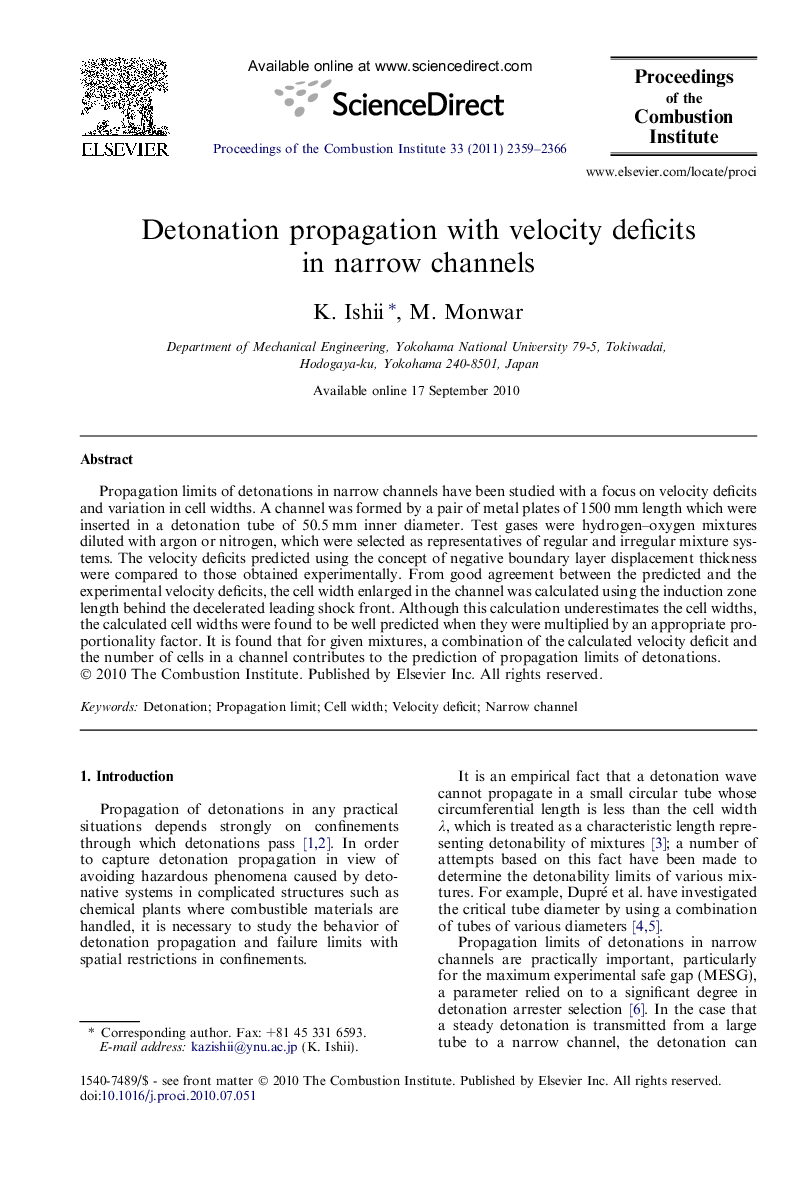| Article ID | Journal | Published Year | Pages | File Type |
|---|---|---|---|---|
| 240688 | Proceedings of the Combustion Institute | 2011 | 8 Pages |
Propagation limits of detonations in narrow channels have been studied with a focus on velocity deficits and variation in cell widths. A channel was formed by a pair of metal plates of 1500 mm length which were inserted in a detonation tube of 50.5 mm inner diameter. Test gases were hydrogen–oxygen mixtures diluted with argon or nitrogen, which were selected as representatives of regular and irregular mixture systems. The velocity deficits predicted using the concept of negative boundary layer displacement thickness were compared to those obtained experimentally. From good agreement between the predicted and the experimental velocity deficits, the cell width enlarged in the channel was calculated using the induction zone length behind the decelerated leading shock front. Although this calculation underestimates the cell widths, the calculated cell widths were found to be well predicted when they were multiplied by an appropriate proportionality factor. It is found that for given mixtures, a combination of the calculated velocity deficit and the number of cells in a channel contributes to the prediction of propagation limits of detonations.
